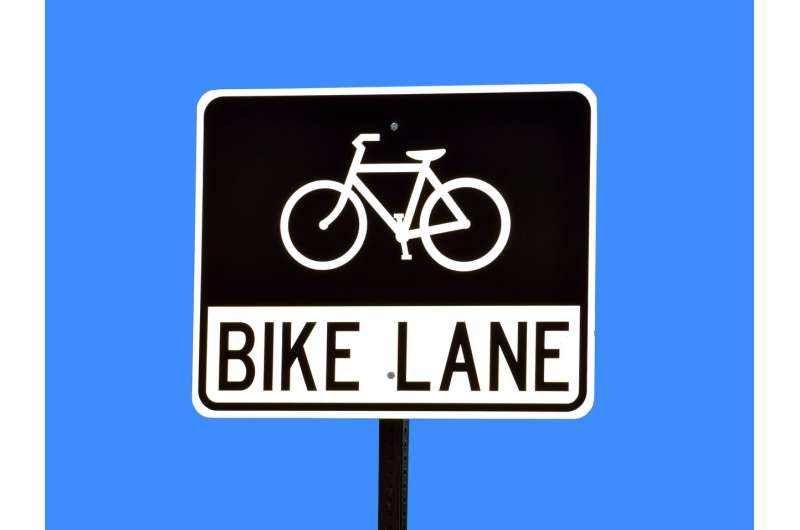Cycle lanes and walkways cut car use, reduce emissions, study finds

Researchers have shown for the first time that investing in cycle lanes and walkways encourages people to drive less and cuts carbon emissions.
The researchers, from the University of Otago, Wellington and Victoria University, studied the impact of new cycling and walking paths built in New Plymouth and Hastings in 2011.
In the three years after the development of the new infrastructure, they found there was a reduction of 1.6 per cent in vehicle kilometres travelled and an associated one per cent drop in carbon emissions.
It is the first study internationally to demonstrate that investing in cycle paths and walkways leads to a reduction in emissions.
"This is good news for our agenda to reduce carbon emissions, which is essential to meet our international targets and of course to contribute to stabilising the climate," lead author Associate Professor Michael Keall from the University of Otago, Wellington, says.
Co-author Dr. Caroline Shaw, a senior lecturer at the University of Otago, Wellington's Department of Public Health, says the one per cent reduction in carbon emissions is likely to be a conservative estimate, as shorter car trips—those most likely to be replaced by walking or cycling—typically had higher per kilometre emissions.
"It is also important to note that we would expect the more extensive networks of cycle lanes which some councils are now putting in, to have an even bigger response," Dr. Shaw says.
If the same level of investment was made nationwide, it could reduce the country's carbon dioxide emissions by at least 0.23 million tonnes over three years, the researchers say.
Building new cycle paths and walkways also appeared to reduce car ownership in the two cities. New Zealand has a high rate of light vehicles per capita, with 77 cars per 100 people, second only to the United States.
The researchers used a variety of methods to collect information on car usage, conducting face-to-face interviews with householders, analysing odometer readings from licensing data and reviewing details on car ownership from the New Zealand Household Travel Survey.
The data from New Plymouth and Hastings were compared with information from Whanganui and Masterton—two cities which received no additional government funding for cycle ways or walking paths.
Dr. Shaw says the research clearly demonstrates that people are prepared to substitute cycling and walking for car journeys.
"We already know that putting in cycling and walking infrastructure reduces congestion and makes cities nicer places to live as well as being highly cost effective. We now also know that it reduces carbon emissions."
Provided by University of Otago


















